
Throughout the series, I’ve talked about techniques, gear, and the viability of carrying a revolver in today’s world of affordable and reliable semi-automatics. But one popular subject I haven’t given much attention to is that of lightweight compact snubnose revolvers.
That’s not an accident. Even though featherweight snubbies are the most popular breed of the wheel gun today, they are also largely responsible for the negative impression that many shooters have of revolvers. They’re difficult to control and shoot accurately. In defensive calibers, they deliver harsh recoil, and almost without exception, they have terrible sights. I’d much rather focus on the revolvers that have a bit more size and heft to them that are both fun to shoot and easy to shoot well.
But if there’s an exception to the rule of user unfriendliness in the lightweight snubnose category, it’s the Ruger LCR series. When the original .38 special version was released a few years back, I actually wasn’t overly impressed, initially. The trigger was certainly a big improvement over the ubiquitous Smith & Wesson J-frame, but the harsh recoil was not significantly better than other lightweight revolvers. Some people are okay with carrying a gun they don’t shoot much at the range, but for me, that kind of defeats the purpose of practice. If the recoil from a handgun is uncomfortable enough that I don’t want to shoot more than 50 rounds at a time, then I will find a different gun to carry — one that I’ll enjoy practicing with.
Fortunately, Ruger followed up the original LCR with a slightly heavier version chambered for .357 magnum. You’d have to be a glutton for punishment to actually fire magnum loads out of that thing, but the extra four ounces of weight on the .357 LCR make a major difference when firing .38 special ammo, bringing the recoil from “barely tolerable” down to just “mildly irritating”. The addition of a .22 LR version of the LCR, which I reviewed last year, brought even more appeal to the line, since you could then have a trainer snubby with the exact same size, shape, and feel as its centerfire brothers.
And that brings us to the subject of today’s review – the new 9mm LCR. It’s built on the same frame as the .357 version, so the upper half is steel with a polymer lower half. And like the .38 special and .357 versions, the 9mm cylinder holds 5 shots. In fact, besides the caliber, the only major difference of the 9mm version is that it uses moon clips.
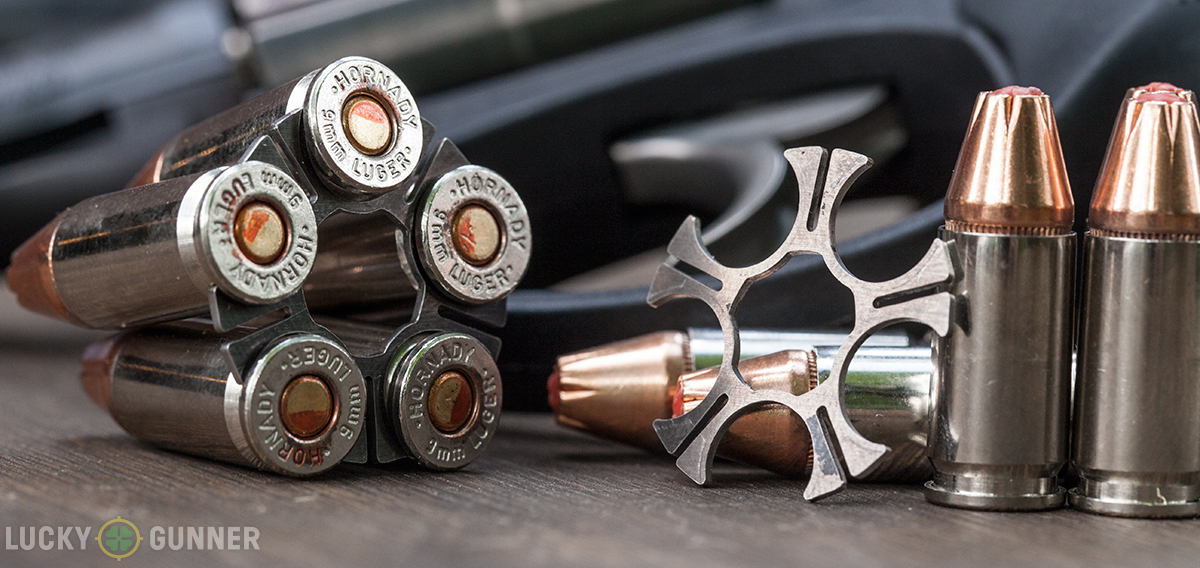
Why 9mm?
You might be wondering if a 9mm revolver is a solution in search of a problem. With the scores of available loads in .38 special and .357 magnum, what’s the point of chambering a revolver in 9mm, especially since it requires fussing around with moon clips in order to work properly?
If the simplicity of the revolver is what appeals to you, then the .38 or .357 versions of the LCR probably make more sense, but there are some compelling reasons to consider the 9mm version.
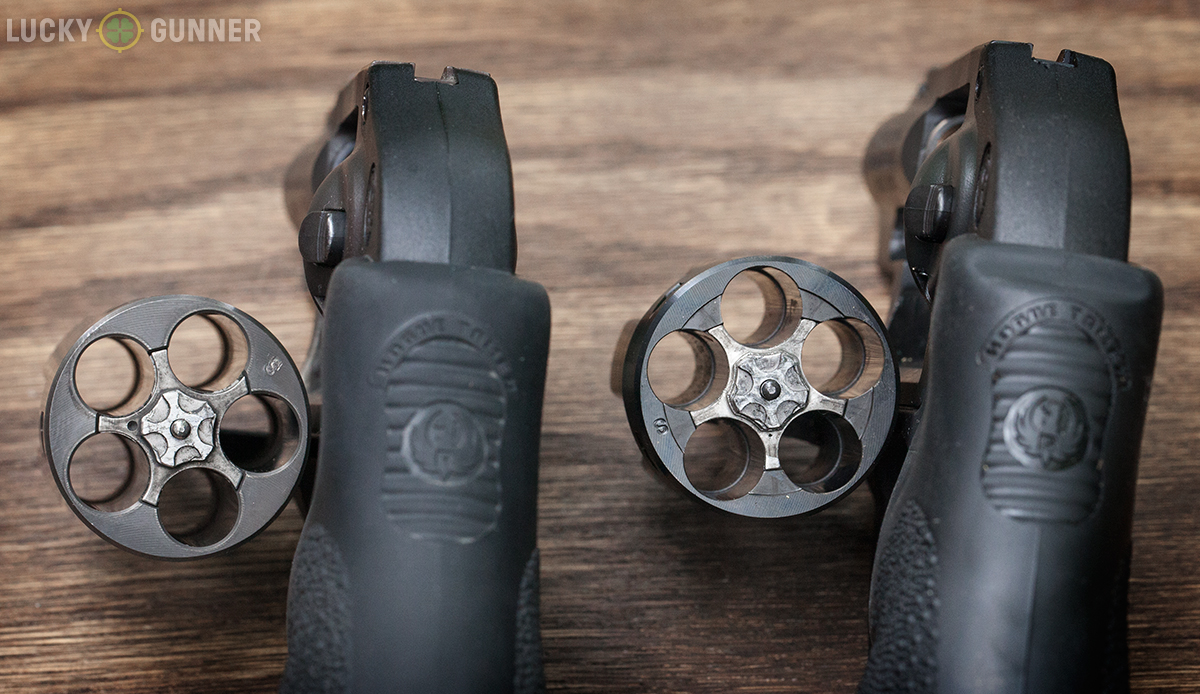
First, there’s the advantage that moon clips offer for reloads. Both ejecting spent cartridges and loading up new cartridges are quicker with 9mm in moon clips than with rimmed revolver cartridges and speed loaders. The shorter length of the 9mm cartridge makes stuck cases less likely, and generally speeds up the process of reloading.
But, as I’ve mentioned in the past, the likelihood of pulling off a revolver reload in a real world emergency situation is slim, at best. There are, however, some less exciting, but nevertheless practical advantages of a 9mm revolver. Cost of ammo is a big one. Ammo prices are constantly changing, but I can’t remember a time when 9mm range ammo was more expensive than .38 special. Sharing common ammo with your semi-auto pistols is another perk. Even if you don’t envision some end-of-the-world-nuclear-wasteland ammo scrounging scenario, it can be a major convenience to minimize the number of calibers you keep in your personal stockpile.
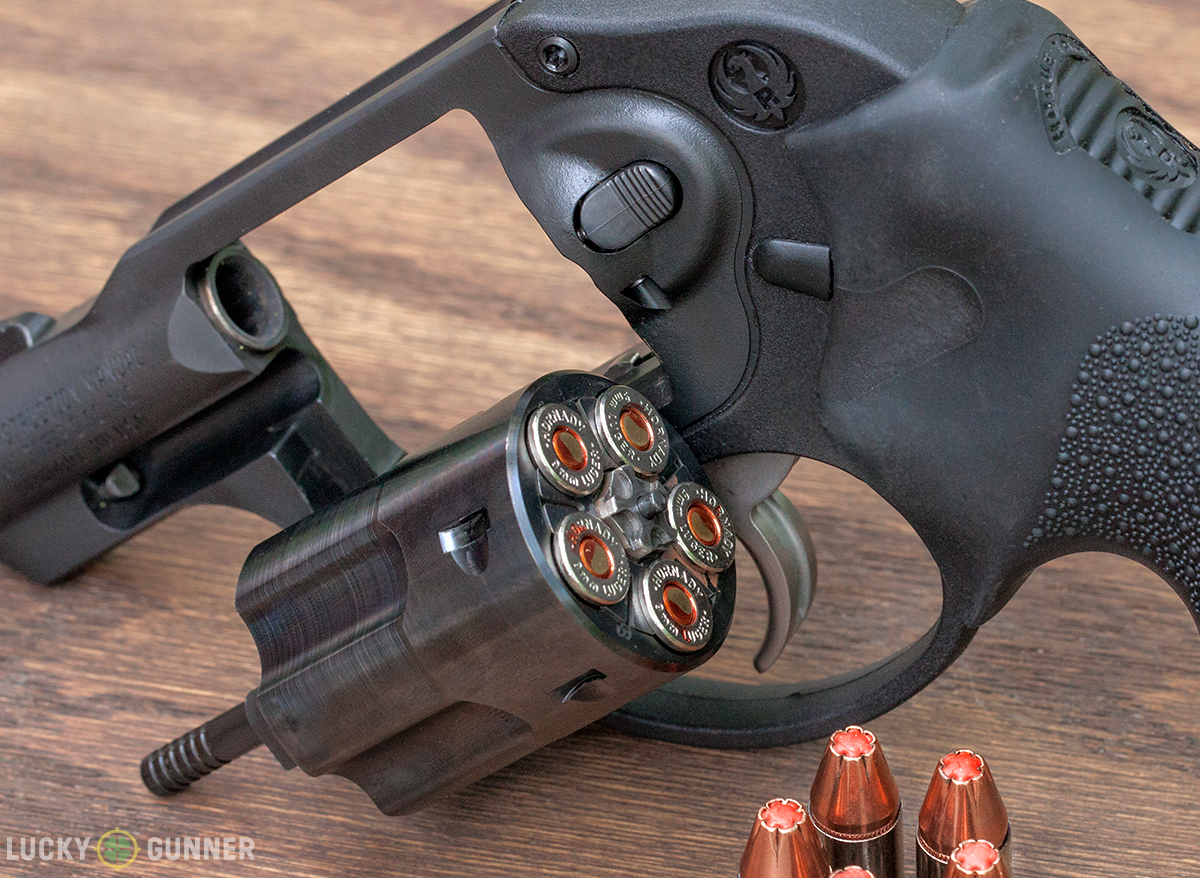
Most importantly however, the performance of the ammo is probably the biggest advantage of the 9mm revolver. Neither .38 special nor .357 magnum are known for living up to their potential when fired from short barrels. There are a couple of decent self-defense loads out there designed specifically to address this issue, but 9mm loads typically demonstrate better ballistic properties in short barreled guns. You might find ballistics test that will show superior penetration or expansion from a .357 when compared to the 9mm, but that will be at the expense of severely punishing recoil.
Ruger LCR 9mm Range Report
None of these advantages really mean much if the 9mm LCR doesn’t fare as well on the range as the other chamberings. I’ve owned the .357 magnum LCR for a few years now, and I’ve put in a fair amount of range time with it this year since starting the Wheel Gun Wednesday series. I’ve been pretty happy with the performance I’ve been able to get out of the .357 version, so how does the 9mm LCR measure up?
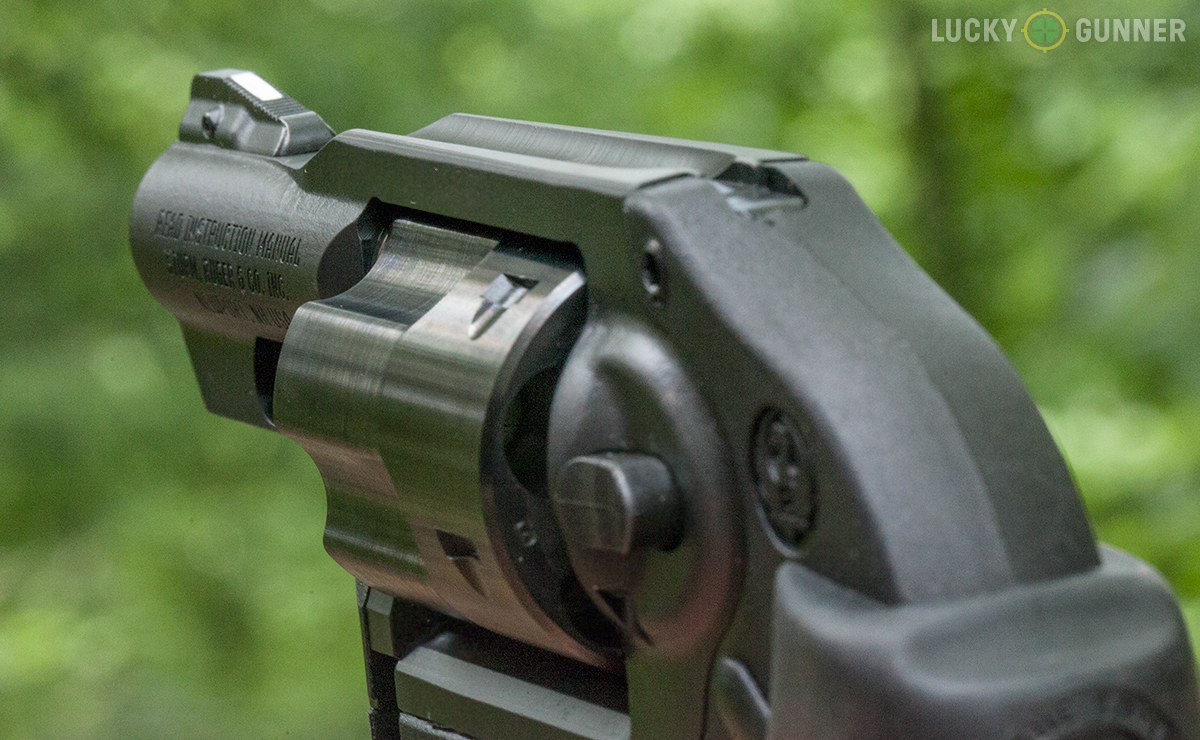
Despite the less than ideal sights, slow fire accuracy was respectable. Using Hornady Critical Duty 135 grain 9mm ammo, I shot a 2.25″ 5-round group at 15 yards. With Blazer Brass 115 grain, the group opened up to 4″. Nothing to write home about, but accuracy on par with other small revolvers.
The trigger on the LCR 9mm is as good as any out of the box revolver trigger you’re likely to find. The pull weight measured 9 pounds on my trigger scale, which is about one pound lighter than my .357 LCR. But more important than the weight, it’s also smooth and consistent. Traditionally, stiff triggers are one of the worst aspects of shooting small revolvers, but Ruger has totally reversed that trend with the LCR series.
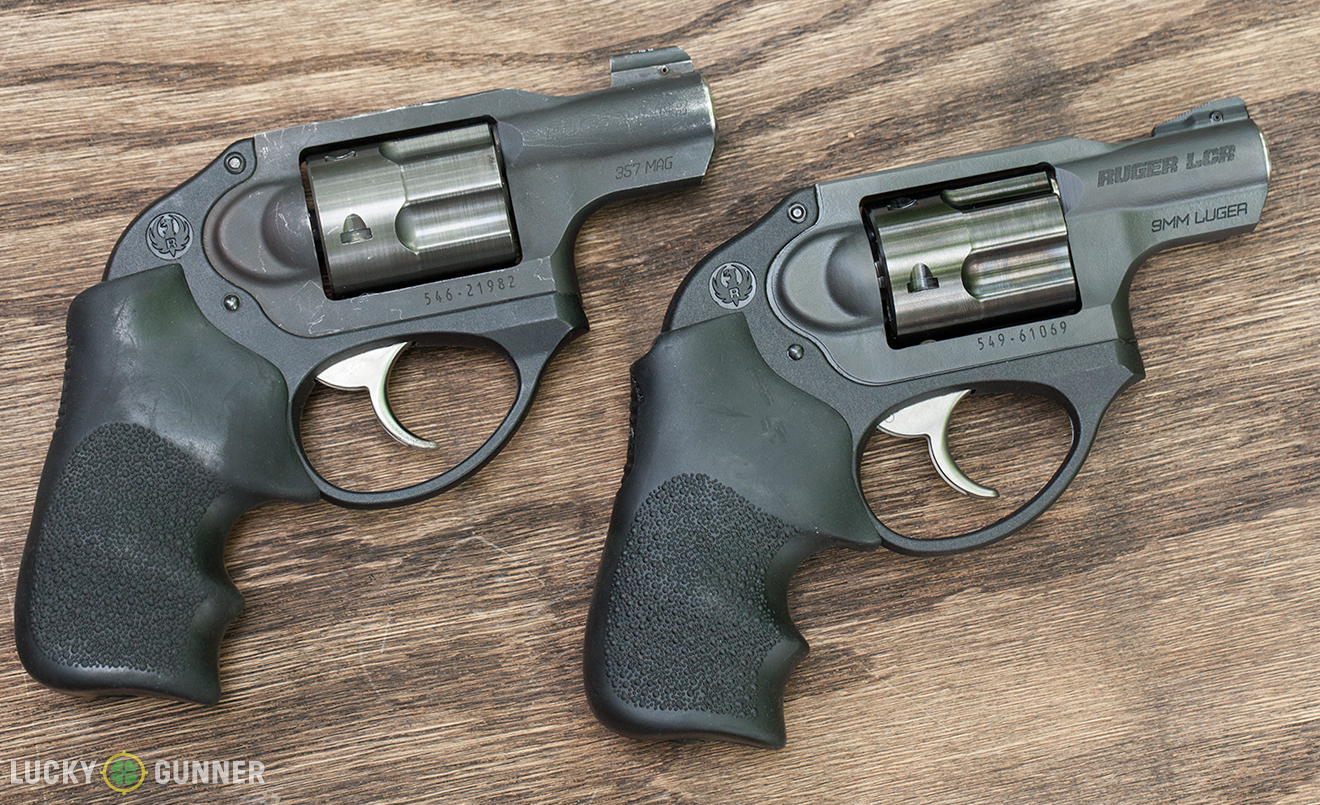
On the range, the moon clips worked as advertised. I didn’t have any issues with them binding in the cylinder, and reloads were definitely much easier than using speed loaders. Unfortunately, the overall experience of shooting the LCR 9mm did not live up to what I’ve come to appreciate from its .357 counterpart.
It all comes down to physics. Sure, 9mm ammo has better ballistic performance than .38 special, and it has less recoil than .357 magnum. But don’t expect the recoil to feel like a small 9mm semi-auto like the Ruger LC9 or S&W Shield. Without the reciprocating slide of a semi-auto to distribute and soften the perception of recoil, the snap from a small 9mm revolver is no picnic.
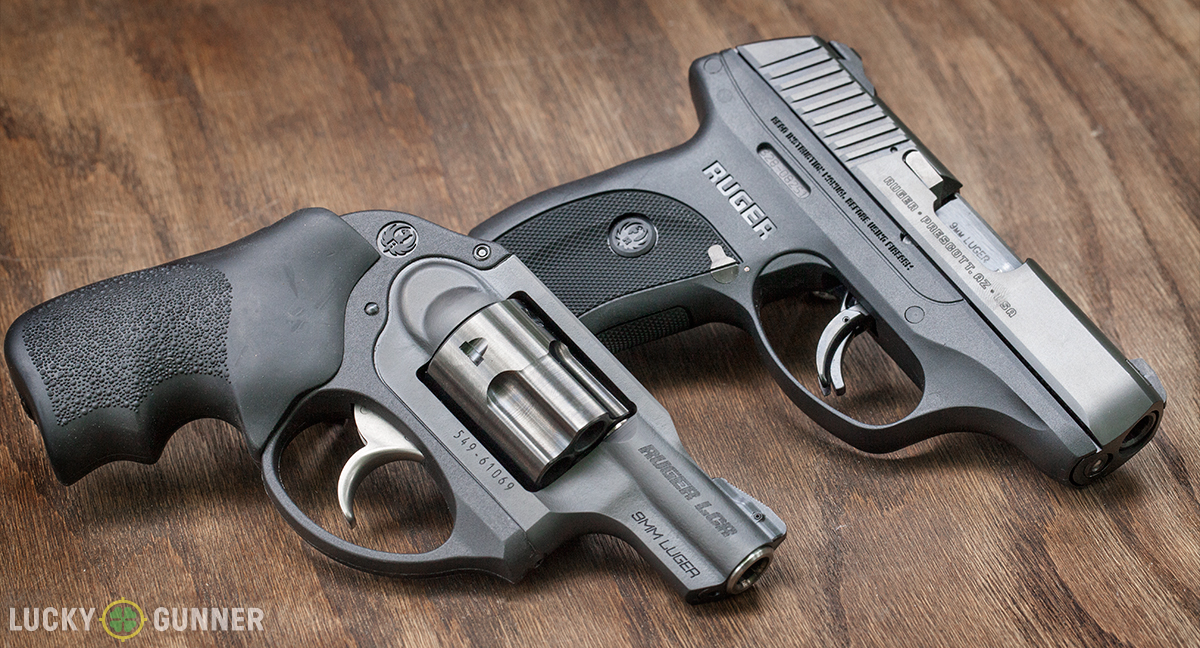
Running some drills with the shot timer, my actual performance was not much different between the two revolvers. But after shooting some American Eagle 130 grain .38 special through the .357 LCR, I was ready for more. After three cylinders of the somewhat mild Blazer Brass in the LCR 9mm, I had to give my had a break for a few minutes.
For me, the slight ballistic advantage offered by the 9mm ammo isn’t worth the trade-off in recoil. Others might find the 9mm LCR to be more enjoyable to shoot than I did, but I would suggest that less experienced shooters avoid this one. Even with the smooth trigger, shooting a gun this snappy is an almost sure way to develop a nasty flinch reflex unless you already practice with heavy recoiling guns regularly. On the other hand, the .357 LCR loaded with some light recoiling full wadcutter ammo might be just about the best way to ease into the challenges of a lightweight snubnose. I like the 9mm revolver concept in theory, and I have no complaints with Ruger’s execution of it, but the .357 LCR will remain my favored light compact revolver.
Technical Specs of the Ruger LCR 9mm
| Barrel Length | 1.875″ |
| Overall Length | 6.5″ |
| Height | 4.5″ |
| Width | 1.28″ |
| Weight (unloaded) | 1.08 lbs (17.2 oz) |
| Sights | U-notch integral rear with pinned white ramp front |
| Action | double-action only |
| External Safety | N/A |
| Ammo Capacity | 5 |
| Measured trigger pull weight | 9 lbs |
| Included Accessories | Three Moon Clips |
| MSRP | $619 |
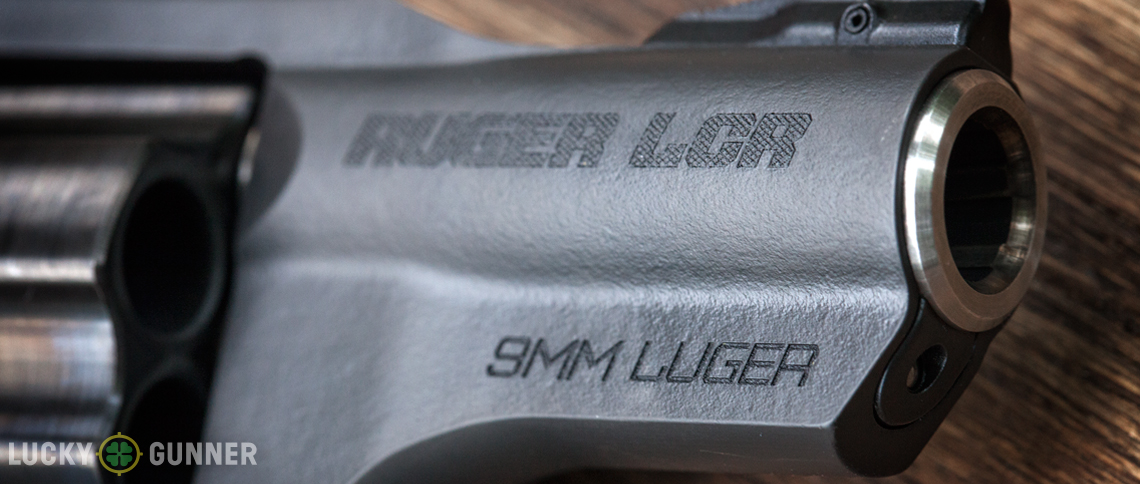

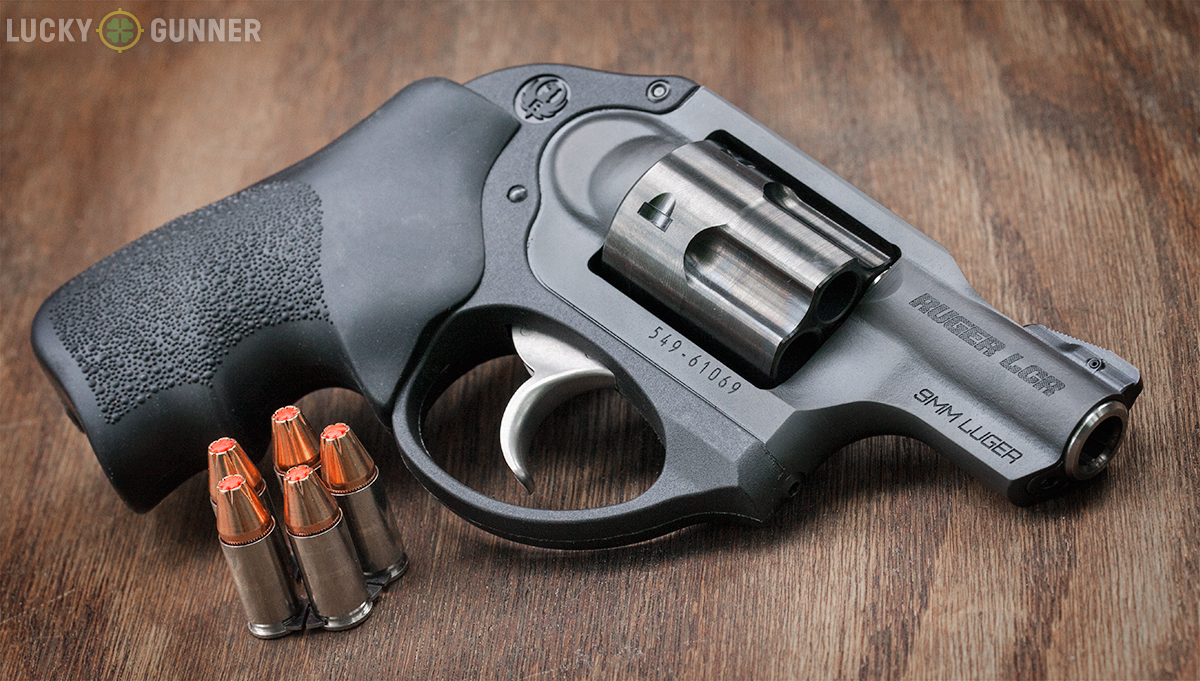
how much for the 9 million
I have to disagree on the idea of consolidation of one’s ammo calibers. In apocalypse I want to have the ability use as many types of ammo as possible. Because you could not always rely on only one type of ammo everyone seeks. Someone else’s trash is your treasure. Wandering in the waste land of ‘Fall Out’ taught me well, always carry different caliber of firearms so you won’t run out of ammo when a particular type became hard to find.
In apocalypse? Are you kidding? I want to go on the first round. Who would want to stay for a second? As far as going is concerned, ‘look up for your redemption is near’.
Wow, your article was right on, until I got to the part of the heavy recoil. I almost did not buy this pistol because of your comment. I had read other review’s that mentioned it was a smooth shooter so I took the chance. I was actually amazed at how light the recoil was. More than just manageable. very easy to shoot a lot of ammo through it with no pain at all. The Hogue grip was a delight, and made this revolver easier to shoot than other 9mm small frame weapons. Having a nice stock of 9mm on hand was a bonus as well as I reload that caliber and can make my own recipes Thanks for the great review.
Glad you’re enjoying the LCR. My gripe with the recoil is, of course, somewhat subjective. I’m comparing it to the .357 LCR shooting .38 +P loads, as well as small 9mm semi-autos. Compared to those, the 9mm LCR is both more uncomfortable and more challenging to fire rapidly. That said, I agree that the Hogue tamer grip is great on these revolvers, and the 9mm LCR should be plenty usable for most experienced shooters.
I’m with Saw Dave. I have both the .357 version that I’ve carried as BUG for several years and now the 9mm added over this year. The .38 special in the 357 is like nothing, though the +p was of course more pronounced. I was concerned with the ballistics so shot some .357 off and on but that was a brute prompting me to go the 9mm route (partly for better ballistics and partly to consolidate around better priced ammo). I found the recoil to be somewhere between the 38 sp and the 357 so I was (and am) happy with it, glad to have added it to my rotation.
I bought the LCR 9mm for my wife @ Cabelas a few months ago. Took it to the range out of the box after thorough review. It only comes blued no nickel or SS. She’s 5′-1″ and small hands. It fit her well with the Hogue grips. Moon clips something of a change from my other revolvers but manageable over time. She’s shot different types/calibers of pistols and revolvers. Prefers revolvers but .38/.357 were a bit much. After shooting the LCR she didn’t seem to complain about the recoil. Likes it being hammerless and fits well in her purse and it’s hot ready to go. Reloading after 5 rds is a worry. Clips are cumbersome but doable. Shot 50 rds with 5 misfires from Federal target ammo. 5 hung up in cylinder, bullet lodged leaving behind fully charged cartridge. Taking other box back and misfired rds. Thinking-bad ammo, firing pin malfunction, or out of round loads. Any comments would be appreciated.
Again, a moon clip is no different than a speed loader. Six of one half dozen of the other.
Bullet stuck in the barrel? I would definitely swap to a different ammo. Maybe I am lucky,
but in 70 years of shooting, I cannot recall that ever happening to me.
And I shoot a ton of Federal ammo.
I would also send the revolver back to Ruger, for a checkup. It is free and may save problems
down the road.
Sidney, Thx for your reply. The bullets are coming apart in the cylinder and not getting sick in the barrel. I read from ColoJim…’sharp recoil can cause the unfired rounds in the cylinder to move forward’. The ammo has not been properly crimped. I was not aware of this because I’ve never shot 9mm before. I have never had this problem with .38/.357 target ammo. The folks at Federal ammo would not rectify nor tell me about the crimping issue with this target ammo. I still have one full box left. Thanks to both of you for your response and help. Fool me once shame on you, fool me twice shame on me.
2ferone, Colo.jim is right, I have a Ruger LCR and bought some CCI
.38 Special shot shells. Every one of them drifted forward in the cylinder. And they were not ever high pressure cartridges. I pistol or a revolver is a tool, to save your or your loved ones lives. They should
be treated with respect. If it doesn’t work correctly, either sell it, get it fixed or use it for a boat anchor.
Since 9mm ammo bullets are not crimped in (like .38 or .357), sharp recoil can cause the unfired rounds in the cylinder to move forward. I’m guessing that’s what happened with your target ammo. Using a different type of ammo with a tighter bullet fit (i.e. taper crimp) will likely solve the problem.
Re – LOAD !! Biggest issue would be carrying a reload moon clip.
No diff than a speedloader.
You can buy a pouch for some brands of speedloaders.
true, I use half moon clips in my S&W Governor. Takes up less room in a pocked, Also leave room for 3 .410 loads. :<}
OOPS, a pocket.
What’d you say, you use a moon clip with only 2-3 rounds or a clipped moon clip ?
My bad, I meant a half moon clip. S&W Governor is 6 shooter. Half moon clips would not work in 5 shot LCR. S&W uses them to vary loads in the weapon.
.45 long colt, .410 shot shell or .45ACP which needs the full or half clip.
I carry my LCR concealed in the winter so my vest pockets are large enough to pocket a couple of Ruger’s 9 mil clips. Summertime, I tote my SR1911 CMD under my shirt with tails out.
I am considering buying an LCR in 9mm now that Ruger has the New ARX ammo. The muzzle speeds are
much better, however felt recoil is mild compared to regular defensive ammo. I have shot this ammo in my
LCP, LC9, LC9s and SR1911. And my wife’s LC380. I have yet to have any issue with this ammo, as to stovepipe, FTF, or feed problems. Check out the specs, this ammo is swift.
I’m kind of leery of moon clips on a defensive weapon. It seems to me that unless you were carrying them on one of those belt-rack thingies (I dunno what they’re actually called) that competitors use it would actually be harder to affect a reload than it would be with a speed loader, and there’s the chance of the clips getting bent.
Anyone have experience with .327 ammo/revolver? I thought Ruger came out with it in the LCR.
It sounds to me that you’re just not used to wheel guns. Luckygunner may I ask you if you learned on a revolver or did you learn on an auto? To me full power mags out of my lcr 357 aren’t that bad (in fact not really any worse than the security six I learned to shoot on – just a tad different). Stance and grip are different for a wheel gun than an auto – there are techniques that will help with that recoil: otherwise who would ever shoot those 500 magnums and 454 alaskans? In an auto you want to be really stiff to avoid the dreaded limp wrist and stay on target. With a recoil a stance like ‘elbows out’ allows to the recoil to push without disrupting your aim and allowing faster follow up shots. Jerry M has a good tutorial for better wheel gun shooting. I cringe now because everyone that plays the “too much kick” card just much be doing something wrong – there are plenty of harder-kicking magnum rounds for polar bears and the like.
“You tend to twist your elbow to avoid the recoil. That’s more of a revolver technique.” – Boss to Ocelot MGS3
You offered the same advice when you commented on a different revolver related post of mine 6 months ago. I spent the better part of last year researching, shooting, and attending classes on using revolvers. I’m not saying there’s not plenty left for me to learn, but I’m well aware of how to grip one in order to shoot it effectively, and I know better than to take shooting advice from a video game.
The people shooting the big bore magnum revolvers are primarily hunters. Their usage and application is completely different from someone carrying a snub nose for personal defense against human attackers. With a self-defense gun, accurate hits in quick succession are important, and recoil is the enemy of speed. “Too much recoil” for a five shot snubby doesn’t mean the same thing as “too much recoil” for a gun used to shoot bears.
Having said that, if you really can empty your LCR with magnum loads in under 1.5 seconds into a target and still be in the mood to practice it again, then I would suggest that there is more than just technique involved, and maybe the size or shape of your body and hands have something to do with it. Not everyone experiences recoil the same and saying that a gun delivers too much recoil for its size and caliber is not necessarily a reflection of poor technique. But, you know, if you learned differently from playing Metal Gear, just go ahead and go with that…
Hi there,
First of all, I wanted to apologize if I have come off as you as being some sort of online troll; that was not my intention. I have some frustration when it comes to the common opinion on what is too much recoil. Maybe you’re right. Maybe my hands are better adapted for recoil; I have smaller than average male hands and nothing to brag about on the upper body strength. Anyways, I decided to delete my comments. I do appreciate your writing – keep it up.
On a side note, I think ruger’s main niche for the 9mm lcr was as a backup to a larger 9mm but I am just speculating. I’m not saying shot placement isn’t key but I do buy into the energy theories and kinda believe a defensive shooter needs every edge possible.
Anyways, good luck in your continued writing.
Sincerely,
Bryan
No problem, Bryan. And I apologize for misreading the tone of your initial post. We do get our fair share of trolls and keyboard “experts” and it’s not always clear what everyone’s intention is.